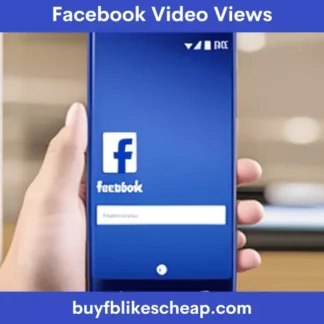If you already have knowledge about digital marketing strategies, you have surely heard of the term “engagement” repeatedly, buy 20 Facebook Photo likes and it is one of the most important things related to user experience.
By having good engagement, you not only get more traffic, reactions, and comments, but you also get a better positioning of your brand image, which translates into greater trust on the part of users and, therefore, more sales.
If you want to know how you can generate engagement on your social networks and on your website, then this article will interest you, as we will talk about all the details of this concept and how it is related to online marketing.
What is engagement?
In a short and simple way, we can say that engagement is the level of commitment that people have with a brand, that is, it is about all those relationships of trust generated by the good experience of the users, which can become fidelity.
In fact, “engagement” is an English word that literally means “commitment” in Spanish, but in the context of online marketing it is taken more broadly, considering aspects such as:
- The level of satisfaction consumers had after purchasing the company’s products or services.
- Good communication between the brand and the user, through the different communication channels such as social networks, email, chats and website.
- The level of interaction users have with these same brand messages.
- A good perception of the brand image, which has the ability to convey an image close to the user, and have a personality instead of just being another company.
In this way, we can see that engagement does not depend so much on aspects such as the number of followers —or the number of “likes”— that you could have in digital media, but rather on how good the perception is of the brand, and how enamored users are with it.
Types of engagement
Now, the above is a general vision of the concept, however, in order for you to understand how it can be measured and improved, buy 20 Facebook Photo likes it is necessary to review the main types of engagement, which cover 3 perspectives:
1. User Engagement
This type of engagement has to do with the level of satisfaction and commitment that the followers of your social networks and website have. It is, in general, the first thing that is taken into account when talking about this topic.
The higher their engagement, buy 20 Facebook Photo likes the greater their interaction with your posts and their responses will trend positively. These content consumers can easily be converted into leads—by filling out a form—and after that become customers.
2. Customer Engagement
A common mistake is to think that only user engagement exists —or should only be measured—, that is, of those who are just in the initial stages of the purchase process. However, taking customer engagement into account is just as important, if not more so.
This type of engagement is part of the loyalty stage, the general purchase experience, and post-sale actions; therefore, the greater the satisfaction of the clients, the greater the probability that they will become ambassadors of the brand.
This is very beneficial, because let us remember that brand ambassadors are those users who have fallen in love with their shopping experience, so they will recommend the products and services purchased to their acquaintances, friends and family, thus achieving word of mouth advertising. .
3. Employee Engagement
This is a term that is not so common in inbound marketing campaigns, since it focuses on employees, although it should be a very important factor in any company that wants to have a solid and lasting relationship with its work teams.
In this way, it has to be seen from the point of view of organizational culture and work environment, since by caring for the well-being of the staff, a higher level of commitment is achieved, an improvement in their respective tasks and —therefore— in the productivity.
How to measure engagement?
One of the most frequently asked questions on this topic is based on how engagement can be measured, bearing in mind that —at first— several of its aspects can be considered subjective.
The good news is that everything —or at least almost everything— in digital marketing can be measured, evaluated and adjusted, and engagement is no exception to this.
Social networks like Facebook, Twitter, Instagram, YouTube and Tik Tok have similar indicators, which help you calculate engagement.
Therefore, here is a list of the main indicators for digital media:
- Interactions: Includes any action that a user can do on the post, such as sharing it, liking it, commenting, etc.
- Likes and reactions: They are the “thumbs up” of various social networks, and the different reactions of Facebook.
- Reach: It is the number of times a person sees a publication.
- Media Views: Applies to formats like still images, GIFs, and videos, and is about how many times that content was viewed.
- Comments: As its name implies, they are the answers that users write.
- Number of posts: It is the number of publications that are made per day, week and month in each of the social networks.
- Shares: It is the number of times a user shares your content in their feed. On Twitter it would be the retweets.
- Clicks on links: It is used when the posts have a link to another site. It is the number of times someone clicks on that link.
- Leads: These are the people who decided to fill out a form with their personal data, to send it to the company in exchange for valuable content. This can be done both on social media and on website landing pages.
If you are wondering how to put all this data into a formula, you have to keep in mind that there are several ways to do it.
One of the most popular for a long time on Facebook was to take the number of likes —today reactions—, shares, comments; then divide it by the total number of followers and the result of that multiply it by 100.
The formula would be as follows:
Engagement = (Reactions + Comments + Shares/Total Followers) x100
The advantage of using this formula is that, by taking into account the number of followers, you can compare the engagement of your social networks with that of the competition, since all this is public data that can be obtained directly from any fan page.
However, this formula is limited because it does not take into account the total reach of the post, since many of the interactions do not come from followers but from other users, and this aspect is more noticeable when it comes to viral content.
Therefore, the formula that many consider the correct one is the following:
Engagement = (Total interactions/estimated post reach) x 100
The total number of interactions includes comments, shares, each of the reactions, views, clicks on links, leads captured in the forms, retweets —in the case of Twitter—, direct messages, etc.
In fact, the main advantage of this formula is that it can be applied to any social network, and that —in addition— it produces the most accurate results. Its only disadvantage is that it is difficult to compare engagement with the competition because the “total reach” is not public data.
How to increase engagement?
Now you know what the level of commitment is, how many types there are and what are the main formulas to measure it. But what steps can you take to increase your engagement? Here is a short list of our recommendations:
- Respond to the comments of your followers: Interaction with users is of vital importance so that they feel the brand more human, and not as a company that only wants to sell. You don’t have to reply to every comment on a post, but you do need to pay attention to several of them.
- Pay attention to the opinions: It has to do with the previous point, because among many of those comments there will be valuable opinions about the content and the brand. It is very important that you take note of everything that could improve your network strategy.
- The copy is very important: The copy is the texts that have a sales and marketing purpose; this includes the text of a multimedia content that of the publication, titles, among other things. The more striking, concise and accurate the better.
- Choose the best time to post on social networks: Not all people use their social networks —and the internet in general— at the same time. That is why it is very important that you know your market to know when you will have a greater reach in your publications.
- Define your brand personality: This has to do with the way you communicate with your followers. Some companies choose to keep a serious tone but close to their audience, while others prefer to behave as a friend would. It all depends on the branding of said company and how it wants to be perceived.
- Use eye-catching visual content: It is well known that visual content is what attracts the most attention on the internet. Yes, video is much better, although infographics, memes, and static images are just as effective depending on the buyer persona.
- Use relevant hashtags on Twitter and Instagram: You have to understand how the Instagram and Twitter algorithm works, since hashtags are given a lot of importance. Choose the ones that have the most to do with your publication and thus you will be able to position yourself in the trending topics and reach more people.
- Consider going live: The streaming format is here to stay. In your content marketing strategy, you can create a podcast where you talk about different topics related to your sector, buy 20 Facebook Photo likes to give it a little more variety and cover another type of consumer.
- Analyze and understand the content your buyer personas are looking for: Creating valuable content for a real estate investor is not the same as it is for a young student. The form of communication must be different, and that is why you must define very well who you want to sell to.
- Keep track of leads with email marketing: Engagement is also measured by the number of leads you capture through forms on networks and on the website. Make sure you have a nutrition plan —or lead nurturing— to provide them with all the content they need.
- Take care of storytelling: By this we mean looking for the best way to convey the message you want to give to your audience, buy 20 Facebook Photo likes taking care of the narration and being as creative as possible. The advantage of this is that your publications will stand out above the rest.
- Do influencer marketing campaigns: Influencers are people who have the ability to convince their followers to think a certain way and make decisions. Including some influencers can help give you that extra push you need in visibility.





